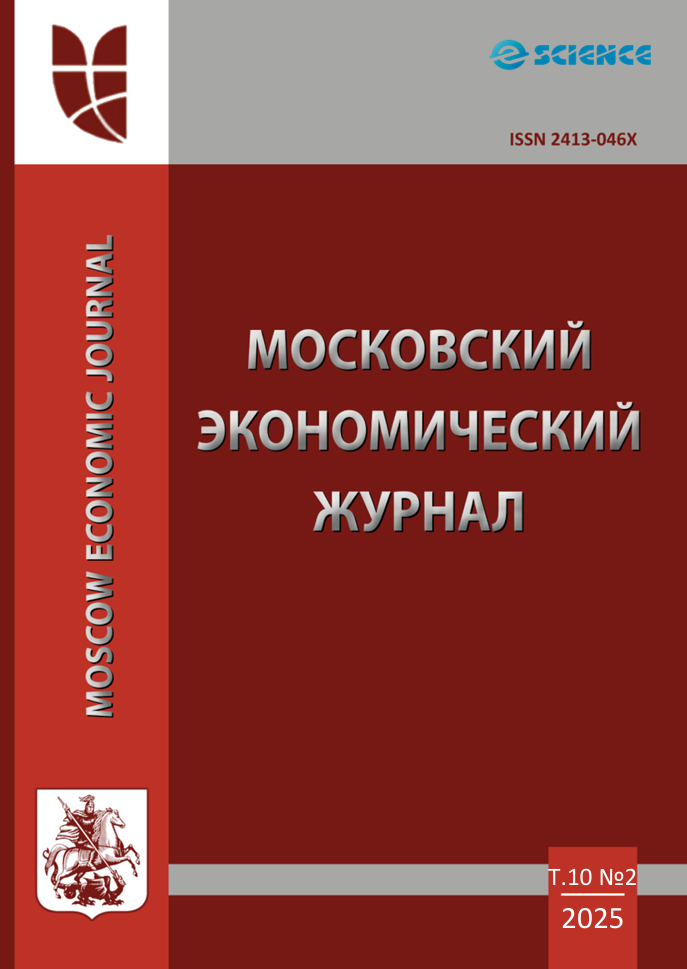UDC 631.1
UDC 635
UDC 338.43.01
It is noted that many aspects of the development of the segment of the business entities – personal subsidiary farms currently remain poorly understood. For the first time, the study solves the problem of optimizing the determination of the optimal size and structure of production activities using the example of a model construction of a personal subsidiary vegetable farm. The task of optimizing the vegetable-growing personal subsidiary farm was formulated in the study by determining the required area for cultivating vegetable crops, growing crops, and natural volumes of the production range. The objective function of the task was solved by maximizing monetary revenue, provided that the entire amount of work would be performed by members of the personal subsidiary farm. The strategy of choosing crop rotation and rationalizing crop rotation is shown. It is noted that the basis of the development strategy should be based on the production and sale of a traditional vegetable set limited to three vegetable products, while all vegetables should be sold mainly only fresh, at their own or contractual market outlets, shops, catering companies, processing enterprises, and other distribution channels in compliance with crop rotations, all modern technological requirements. Calculations have shown that the economic efficiency of the base scenario for the net present value of the project, taking into account the use of a modern machine complex, equipment and inventory for private farms, will amount to 3,545 thousand rubles, with investments in the amount of 8,450 thousand rubles, while this design solution will pay off in 3 years and 4 months. The internal rate of return will be 36.6%, which proves quite convincingly the economic efficiency of the project.
vegetable growing, modeling, personal subsidiary farms, features, optimization, problem statement, development scenarios, project effectiveness
1. Burda, A. G. Modelirovanie ekonomiki. Chast' II.: Metody modelirovaniya proizvodstva i rynka. Uchebnoe posobie / A. G. Burda, G. P. Burda, A. G. Burda // – Krasnodar: Kub GAU, 2005. 497 s.
2. Echmaeva, G. Informacionnaya kul'tura organizatora fermerskogo hozyaystva / G. Echmaeva // M.: LAP Lambert Academic Publishing, 2011. 260 s.
3. Zamknutye cifrovye iskusstvennye agroekosistemy v ovoschevodstve / A. Izmaylov, A. Dorohov, A. Grishin i dr. // M.: FNAC VIM, 2020. 184 s.
4. Innovacionnye tehnologii i sel'skohozyaystvennaya tehnika za rubezhom. Analiticheskiy obzor: Monografiya. / V.Ya. Gol'tyapin, N.P. Mishurov, V.F. Fedorenko i dr. // M.: FGBNU «Rosinformagroteh», 2020. 172 s
5. Tolmachev A.V. Vozmozhnosti chastnogo sektora v obespechenii Rossii prodovol'stviem / A.V. Tolmachev, N.V. Goncharova // Agrarnaya nauka. 2000. № 8. S. 7-8.
6. Ekonomicheskie problemy razvitiya i gosudarstvennogo regulirovaniya malyh form hozyaystvovaniya APK / A.A. Tubalec, R.N. Lisovskaya, A.V. Tolmachev // Politematicheskiy setevoy elektronnyy nauchnyy zhurnal KubGAU. 2012. № 84. S. 737-750.
7. Development of a management and monitoring system for a city farm / A.V. Blinov, A.V. Hollay, V.V. Zakharov // Bulletin of the South Ural State University. Ser. Computer Technologies, Automatic Control, Radio Electronics. 2022;22(1):139–146. doi:https://doi.org/10.14529/ctcr220112.
8. Differences in spatial versus temporal reaction norms for spring and autumn phenological events / M. Delgado, T. Roslin, J. Kurhinen, et al. Proceedings of the National Academy of Sciences of the United States of America. 2020. T. 117. № 49. S. 3149-3158.
9. Main problems of feed industry in the regional agro-industrial complex / E.G. Pupynina, V.A. Zhukova, I.I. Saenko, et al. // Research Journal of Pharmaceutical, Biological and Chemical Sciences. 2019. T. 10. № 2. S. 767-772.
10. Urban Agriculture: Environmental, Economic, and Social Perspectives (2016) / S. Hallett, L. Hoagland and E. Toner // Volume 44, J. Janick (Ed.). URL: https://doi.org/10.1002/9781119281269.ch2. (data obrascheniya: 21.01.2025).











